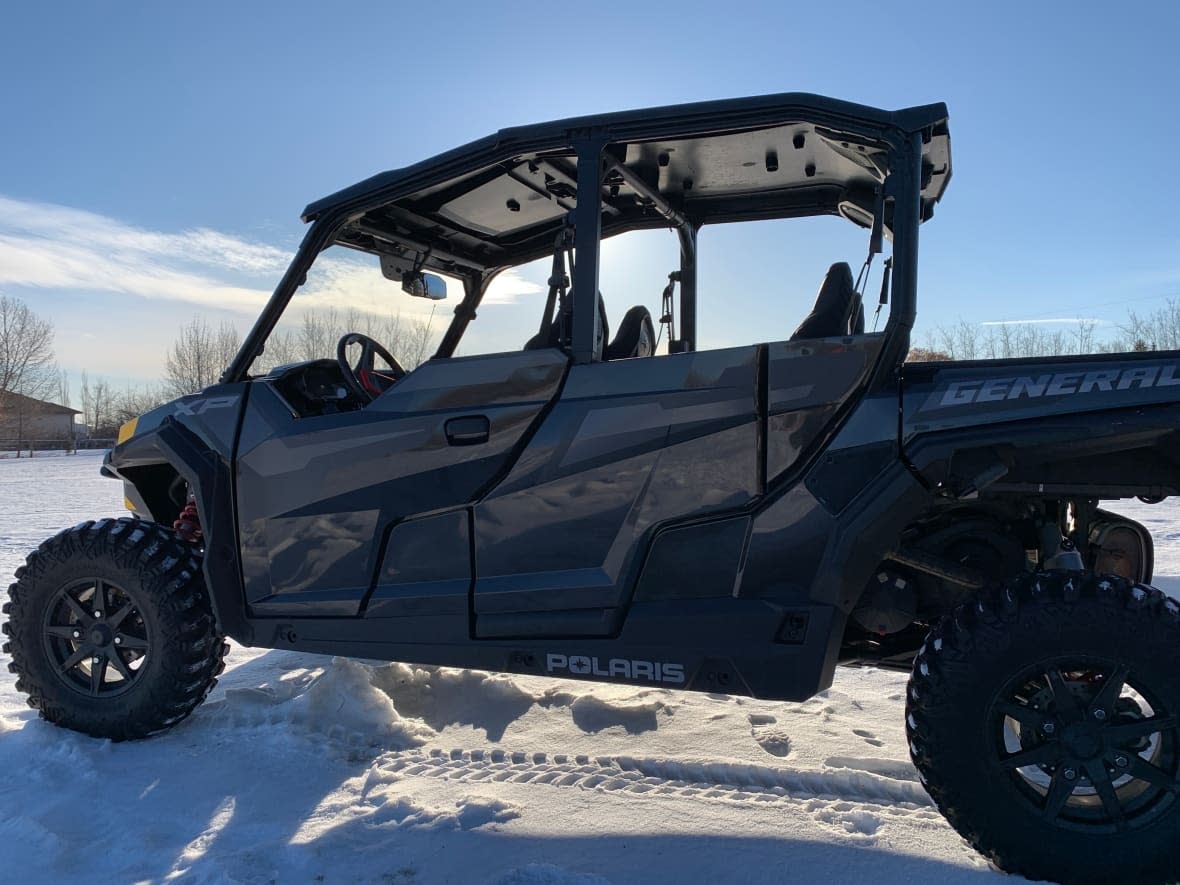Funding for Alberta motorized vehicle trails worries some outdoor lovers

Alberta's four-year commitment to fund the maintenance of motorized recreation trails has pleased off-road enthusiasts, but rankled some people concerned about the environment.
On Friday, Forestry, Parks and Tourism Minister Todd Loewen rumbled up to a Sherwood Park press conference in an off-highway vehicle (OHV) to announce $8 million in public funds will go to two trail maintenance organizations by 2026.
"Our government understands that investing in a designated trail system helps protect our wild spaces, while driving tourism and supporting local economies," Loewen said.
The Alberta Off-Highway Vehicle Association (AOHVA) and the Alberta Snowmobile Association will use the funds to maintain and grow their trail networks.
AOHVA president Garett Schmidt said in an interview Monday that until this year, the organization's 24 member clubs have sustained the network with volunteered time, equipment and donations.
The United Conservative Party government's Trails Act, which the legislature passed in 2021, allowed the minister to designate organizations responsible for maintaining trails.
AOHVA and the snowmobile association are the province's test cases, Loewen said last week. The government may ink more deals in the future.
AOHVA, which is receiving $1 million per year for four years, will grant the money to their clubs for trail improvement, signs, and education efforts, such as information kiosks, Schmidt said.
Building bridges over creeks should also improve the vehicles' environmental impact by keeping them out of the water, he said.
"If it's managed and mitigated, that's also part of sustainability — the balance of social, economic and environmental values," Schmidt said.
Advocates frustrated with growing impact of OHVs
Biologist Lorne Fitch says that balance of values is currently off-kilter, and is leaving Alberta native species at risk.
"The improvement and expansion of off-highway vehicle trails is in direct contrast to maintaining biodiversity and maintaining water quality on virtually all public lands where that activity occurs," said Fitch, a retired fish and wildlife biologist and past adjunct professor at the University of Calgary.

Peer-reviewed scientific studies have found wild areas can only sustain a certain concentration of "linear disturbances," such as roads, trails, or utility corridors, before wildlife is affected, Fitch said.
Alberta has already exceeded that trail density in the eastern slopes of the Rockies and the northern foothills, he said.
Building more trails will put grizzlies, elk, caribou, bull trout, arctic grayling and song birds at further risk, he said.
He said there's no evidence that building bridges over creeks leads to improved water quality around OHV trails.
Fitch said motorized trail users make up a small proportion of outdoor enthusiasts, but are attracting outsized government investments.
Also frustrated is Shaun Peter, who lives in Canmore and owns Bragg Creek and Kananaskis Outdoor Recreation.
While hikers, cyclists, paddlers and climbers pay $90 each year per vehicle to use Kananaskis trails, OHV users pay $54 a year to register their vehicles.
Peter said the contrast is stark in the McLean Creek area of Kananaskis, where OHVs and on-highway vehicles frequently get lodged in muddy trails and need to be towed out.
He says pedestrians are paying higher fees and causing less environmental damage.
"You kind of need to get your house in order before you start spending more and creating a bigger trail network," Peter said.
He wants the province to spend more money on trails and facilities that are accessible to a wider variety of people.
The province is looking for ways for trails to co-exist with wildlife habitat, said Forestry, Parks and Tourism spokesperson Patrick Malkin in a Monday email. Trails should be developed in a way to minimize their ecological impact, he said.
The funding isn't a result of favouritism, he said.
"The intentions are to preserve Alberta's natural habitat within a framework that allows Albertans to enjoy all that Alberta has to offer," Malkin said.


